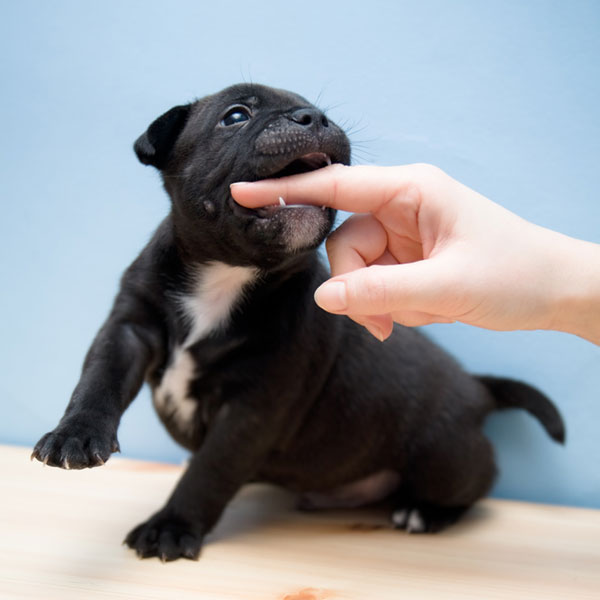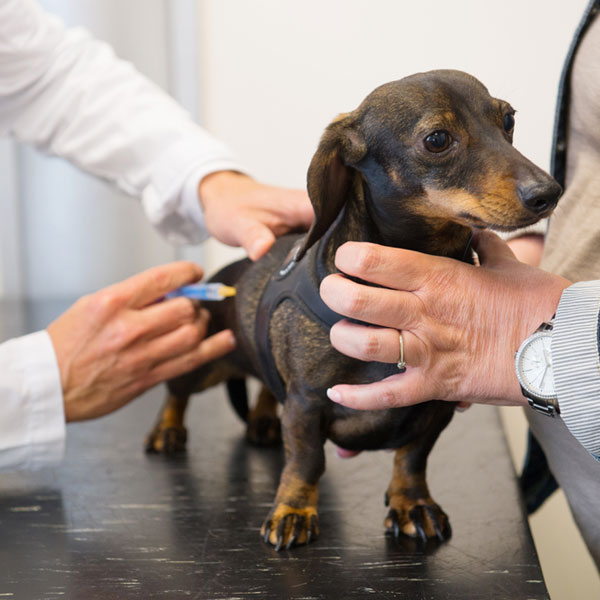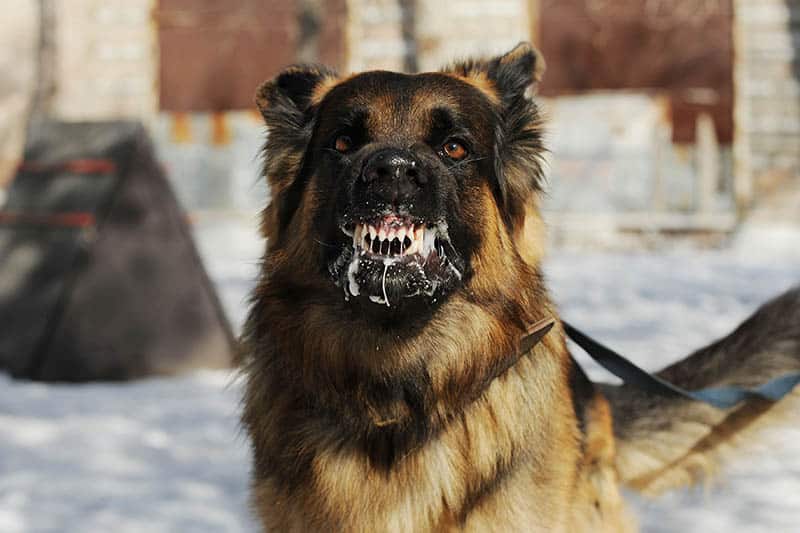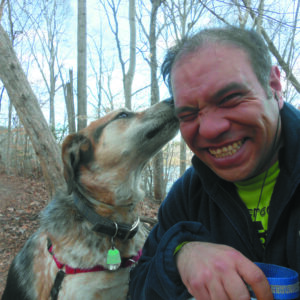Imagine a disease powerful enough to turn a placid dog into a snarling beast. Imagine one strong enough to compel an active dog into utter paralysis within a month. It’s not the rage virus from 28 Days Later, nothing so fantastical. I speak of rabies, a viral infection that has plagued man and dog for at least four thousand years. Rabies has been around for so long, the earliest written records of it are in cuneiform.

Not a moment too soon, in 2007, the Centers for Disease Control and the Alliance for Rabies Control began to co-sponsor World Rabies Day, observed on September 28. This day was chosen to honor the passing of Louis Pasteur, who, following the pioneering work of Edward Jenner and Emile Roux, developed the first reliable vaccination against rabies. World Rabies Day represents a concerted effort to keep rabies — now a completely controllable if not eradicable disease — at bay.
What is rabies?
Rabies is a fast-acting and deadly virus, but thankfully, one that is preventable with common vaccinations. Though there are many variant strains, this viral infection has two major forms, furious and paralytic. Furious rabies should call to mind a common mental image of rabies in dogs, dangerous and aggressive behavior, and maybe some foaming at the mouth. Paralytic rabies deprives dogs of motor functions. The two forms of rabies virus are not mutually exclusive; a case of rabies in dogs can begin as furious before giving way to paralysis, and, within a short time, death.

How do dogs get rabies?
For the most part, rabies virus is transmitted from one infected host dog to another dog by means of a bite. Rabies is transmitted in saliva of an infected host. A bite is not necessary, though, since infected saliva can enter the bloodstream through any orifice or any open wound. The mature rabies virus doesn’t discriminate; its imperative is to replicate. In North America, transmission of rabies is usually the province of infected woodland creatures. Bats, foxes, raccoon, and skunks are the most common carriers.

Upon entering the body, rabies gathers and replicates in a dog’s muscle tissue before making its way, via the nervous system, into the brain. During the rabies incubation period, the virus begins to swell the brain. This causes sweet dogs to become unthinkingly cruel and aggressive, or active dogs to become slack-jawed and disoriented. The entire process, from the moment of infection to full-blown rabies, takes, on average, between one and three months. The time varies, though, depending on the size of the dog and the length of the rabies virus’ journey from the point of infection to the brain.
Rabies symptoms in dogs
Symptoms of rabies in dogs vary based on the individual dog’s response to the virus as it gathers strength and takes control of the dog’s brain. When rabies symptoms appear, they will indicate, through a dog’s rapid and extreme change in demeanor, the form of rabies that a dog has contracted. Furious rabies will present when a normally gentle and friendly dog suddenly becomes tense, distrustful, and violent. Dogs typically active and energetic that become inert, unresponsive, or seem confused may have contracted paralytic rabies.

Physical symptoms will also manifest. Whether it is furious or paralytic, rabies in dogs comes with an aversion to water and trouble swallowing, each of which is linked to another name for rabies, to wit, “hydrophobia,” or fear of water. Other signs of rabies in dogs include an abrupt tendency to eat non-food items, strange changes in the sound of a dog’s vocalizations, and fever. If your dog has an unusual injury or has been tussling with unknown assailants in the night, your first course of action, even if she is vaccinated against rabies, should be a visit to the vet.
Rabies vaccinations are essential
Once a dog is infected, rabies is extremely difficult to cure. When you adopt a new dog, the first thing you do should be to ensure that she is vaccinated. We’ve only had a reliable weapon in our four-thousand year battle against rabies since the 1880s, which is not long at all, and yet, some people resist. Any kind of medical treatment can have side effects. The CDC informs us that “serious problems from rabies vaccine are very rare,” and, indeed, in 75 percent of cases, the primary side effect is temporary itching or soreness at the site of the injection.

Rabies is a zoonotic disease, meaning that it can spread not only between dogs, but between dogs and other animals, including humans. The virulence and power of rabies is the main reason why international travel for dogs can be so complex. Places that have been declared rabies-free, including several islands, archipelagos, and island nations, often enact strict quarantines to maintain that status.
Observe World Rabies Day! Get your pets vaccinated!
Rabies has been a problem for both humanity and dog-kind since before Stonehenge was built. Why would anyone risk their dog’s health or life to this viral infection, now that’s it’s so easy to prevent through vaccinations and maintain immunity through booster shots? This World Rabies Day, if your dog hasn’t been to the vet in a while, do yourself and your dog a kindness, make an appointment, and help keep rabies at bay.
Read more on rabies:
- A Bad Way to Fight Rabies: Baoshan, China, Kills 5,000 Dogs
- Was My Puppy Sick Because She Got a Rabies Shot Too Early?
- Dog Vaccination Schedule
- New Book “Rabid” Charts the Cultural History of Rabies
- Rabies Vaccines: Just the Facts
- Ask a Vet: Why Is My Dog’s Voice Changing?
Learn more about dogs with Dogster:
- 9 Tips for Keeping Your Dog Cool This Summer
- Let’s Talk: Does Your Dog Love to Roll in Stinky Things?
- Be Polite to Your Dog — It Benefits Both of You
Featured Image Credit: Victoria Antonova, Shutterstock






